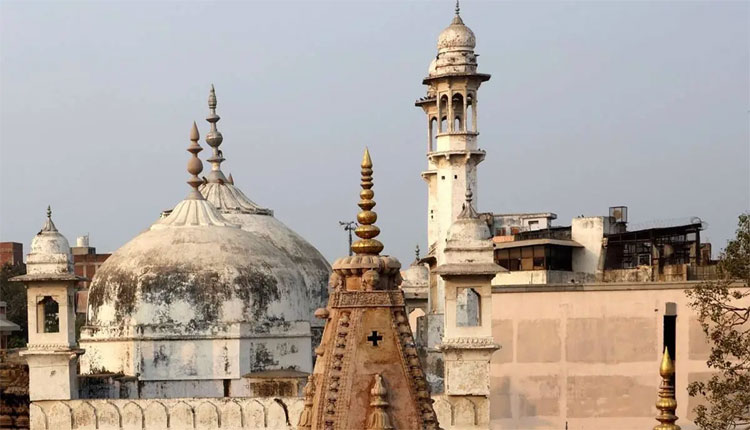New Delhi: Hindu Mahasabha president Swami Chakrapani Maharaj appealed to the Muslim side to give the rights of the Hindus back to them and set an example after an Archaeological Survey of India (ASI) report confirmed the existence of a temple before the construction of Gyanvapi Mosque in Varanasi.
“In the Gynavapi case, the ASI has given a decisive report. It is clear that before the current structure, there was a huge Sanatani Temple. I appeal to the Muslim side that they should hand the rights of the Hindus back to them and set an example that if the Mughals did something incorrect, then the present Muslim generation does not support it,” Swami Chakrapani was quoted as saying by ANI.
Advocate Vishnu Shankar Jain, who represents the Hindu side, said, “According to the ASI report, the present structure was made on a Hindu Temple. The Western wall is around 5000 years old and it belongs to a Hindu Temple. It has carvings of Hindu Gods and Goddesses. Inscriptions are in Telugu and Kannada… Broken idols are found. An inscription installed by Aurangzeb has been found which clearly states that the structure was built after tearing down a temple… GPR survey also says that a lot is there underneath the sealed area.”
Jain further claimed that the ASI report suggests that the temple was destroyed to build the mosque. “All the objects which were discovered were documented. No damages were caused to the structure. Based on scientific study, there is use of pillars of previous structure in the existing structure. The pre-existing structure was there,” he told reporters.
According to the ASI report, this temple had a big central chamber and at least one chamber to the north, south-east and west respectively. Remains of three chambers to the north, 8. south and west still exist but the remains of the chamber to the east and any further extension of it could not be ascertained physically, as the area is covered under a platform with stone flooring. The report further stated that for the enlargement of the mosque and construction sahan, parts of the pre-existing temple including pillars and pilasters were reused with little modifications.
“Minute study of the pillars and pilasters in the corridor suggests that they were originally part of the pre-existing Hindu temple. For their reuse in the existing structure, vyala figures carved on either side of lotus medallion were mutilated and after removing the stone mass from the corners that space was decorated with floral design,” Page 134 of the ASI report read, as per News18.
Notably, the ASI had begun working on a scientific survey of the Gyanvapi Mosque complex in August 2023 to determine whether the 17th-century mosque was constructed over a pre-existing structure of a Hindu temple. Based on the court’s order, the ASI report on Gyanvapi Mosque was provided to both Hindu and Muslim sides.



Comments are closed.